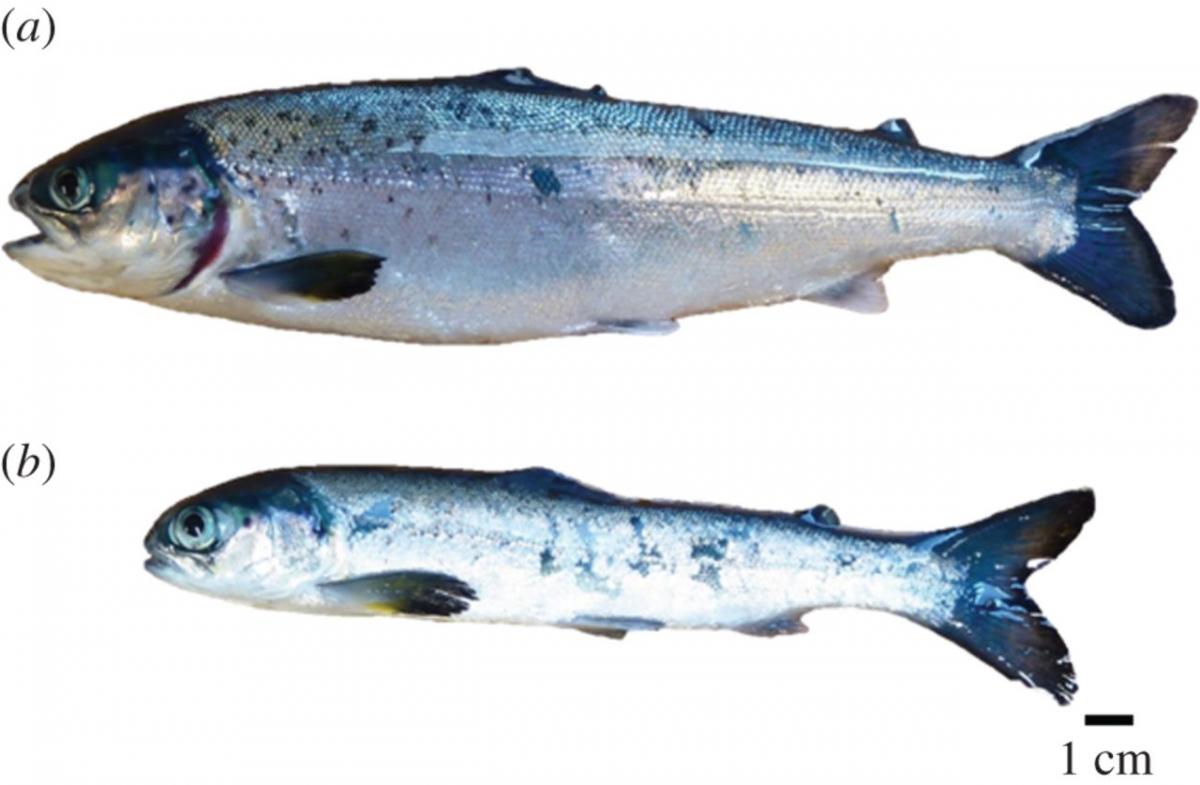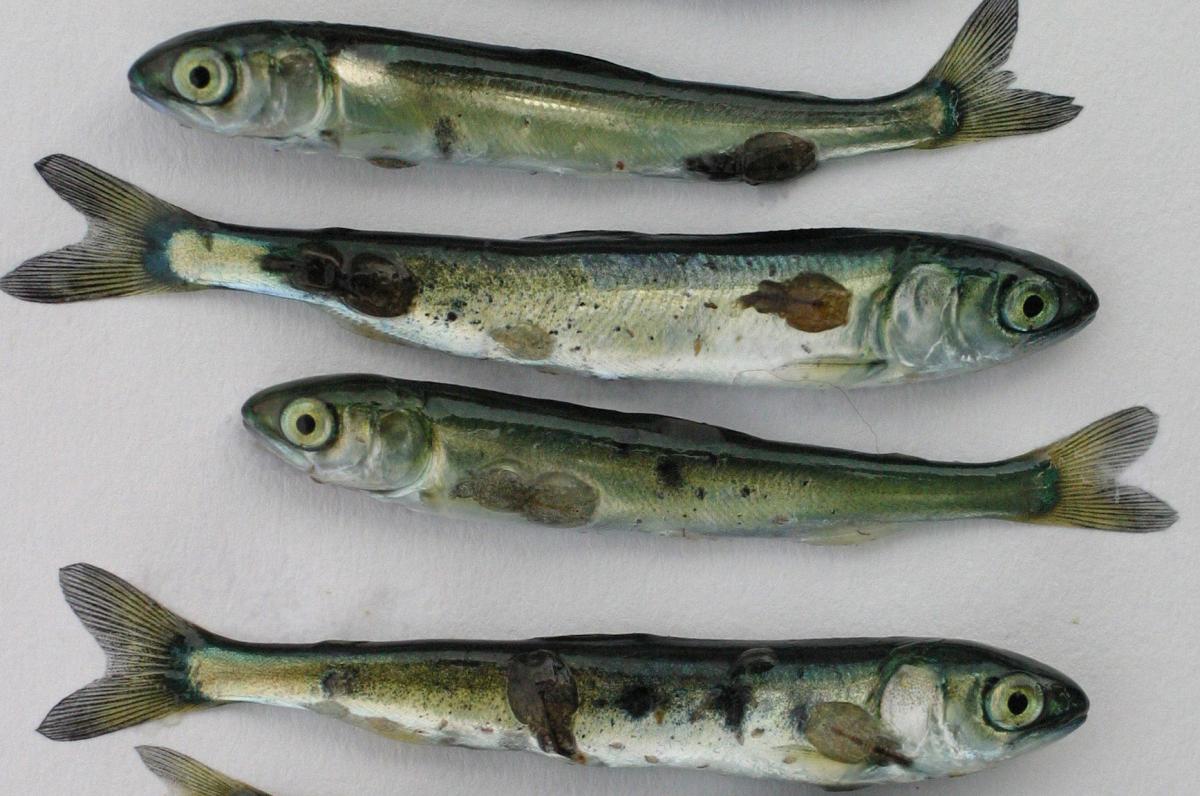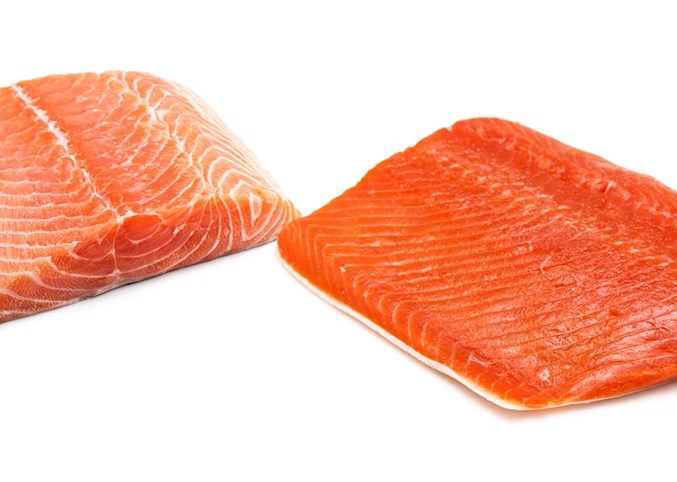April 13, 2017
Deaf, Depressed and Deformed: The Top 5 Reasons Salmon Farming Makes for Unhealthy Fish
Estimated reading time: 0 minutes
BY: Allison Guy
Topics:
When you tuck into a salmon steak, you might think about piscine athletes vaulting waterfalls or braving 1,100-kilometer (700-mile) treks to spawn. But for 70 percent of salmon consumed worldwide, these Attenborough-worthy images don’t reflect reality. Most salmon are farm-reared in conditions that leave them chubby, misshapen and morose. Yes, even fish can get depressed. Below, learn about five of the biggest health problems afflicting farmed salmon, and why these problems might be bad news for diners too.
1. Depression
Up to a quarter of all farmed salmon are what the industry calls “loser fish” or “drop-outs.” These deadbeat fish, though otherwise healthy, are sluggish, stunted and uninterested in food. In 2016, researchers examined the losers’ brains and found sky-high measures of the stress hormone cortisol. They also discovered that the drop-outs had serotonin levels mirroring those of depressed mammals.
Unusually, the losers in the study didn’t respond to the standard method for freaking out a fish — dropping it in a bucket — suggesting that their systems were already so overloaded they couldn’t respond to extra stresses.
The scientists theorized that the overcrowded pens on fish farms are to blame for these bummed-out salmon. Smaller, weaker fish struggle to escape from aggressive neighbors, and may eventually just give up on life. Other unnatural stressors such as vaccination and artificially manipulated water temperatures likely play a role as well.

2. Hearing loss
Can you hear me now? For half of farmed salmon, the answer is “barely.” As a 2016 study discovered, 50 percent of all farmed salmon worldwide have deformed ear bones. This deformity, which can cut a fish’s hearing acuity in half, is 10 times more common in domestic salmon than wild ones.
Scientists still don’t know why hatchery-raised fish are so hard of hearing. But they think that their odd ear bones, or “otoliths” — which are not only essential for hearing but also balance and navigation — may help explain the abysmal survival rates of hatchery-raised salmon released into wild rivers.
3. Scoliosis
Wonky ear bones aren’t the only deformity that afflicts farmed salmon. Young salmon, called smolts, often suffer from oddly curved or kinked spines — the fish equivalent of scoliosis. A host of factors have been blamed for “broken back syndrome,” from artificial lights and unnaturally warm water used to speed up smolt growth in hatcheries to vitamin deficiencies or exposure to toxins.
4. Lice infestations
For humans, coming down with a case of lice means nothing more than annoying itching and a trip to the pharmacy. For salmon, though, it can be fatal. Just a few lice can seriously weaken a small fish, and a dozen or so can kill it. Sea lice were a minor pest before the advent of large-scale, high-density salmon farms in the 1980s. Now, they’re one of the costliest headaches plaguing the salmon industry, responsible for around $550 million in annual losses.
Some pest-control methods — “cleaner fish” like lumpsuckers, or water jets that knock lice off their hosts — are relatively benign. Others have gruesome side effects. The “thermolicer,” for example, briefly immerses salmon in a tube of heated water. This burst of heat wipes out around 95 percent of lice. It can also kill plenty of salmon. Last summer, thermolicer operators on a Scottish farm accidentally poached 95,400 fish.
Pesticide resistance in sea lice is another mounting dilemma, leading some farmers to dramatically up their use of these chemicals. The salmon industry in Scotland, for example, now applies almost 1000 percent more delousing agents than it did just 10 years ago. In Norway, farmers increased the use of lice-killing hydrogen peroxide by 33 percent from just 2015 to 2016.
Lice-control chemicals can be deadly to shrimp, lobsters and other crustaceans. They’re also toxic to salmon. Last September, the same company that cooked nearly 100,000 fish in a thermolicer also poisoned an additional 60,000 with hydrogen peroxide.

A collection of young salmon afflicted with louse infestations. Credit: Alex Morton/Marine Photobank
5. Obesity
Wild salmon are usually caught when they’re gearing up for a grueling migration, so it’s little wonder that free-swimming fish are svelte compared to their penned-in relatives. A 2005 study found that while the average farmed salmon fillet clocked in at 17 percent fat, the wild version was just 6 percent. A 2012 study found levels comparable to the earlier analysis. And visually, farm-raised fillets can often be distinguished by their paler color and thicker bands of white fat.
A chubbier salmon might sound good — after all, fish fat is packed with all those heart-healthy omega-3 fatty acids — but the reality is more complex. As farmers switch to cheaper, more sustainable ingredients for fish feed, salmon is becoming a less wholesome food. A 2016 study found that diners now have to consume twice as much Scottish salmon as they did in 2006 to meet the omega-3 fatty acid levels recommended by public health organizations.
Farmed salmon are increasingly fed diets high in soy, corn, canola, linseed or palm oil. Land-based crops have none of the healthiest omega-3s — DHA and EPA, which only come from marine sources — but instead are high in omega-6 fatty acids. Most people in industrialized countries already consume more omega-6s than is considered healthy, an overindulgence that may play a role in inflammatory diseases like rheumatoid arthritis and Alzheimer’s.
It’s an old saw that you are what you eat. If you’d prefer to be lean, fit and happy, you might want to reconsider eating farmed salmon.

Compared to wild-caught fillets, farmed salmon is pale and fattier. Credit: Edward Westmacott / Shutterstock

